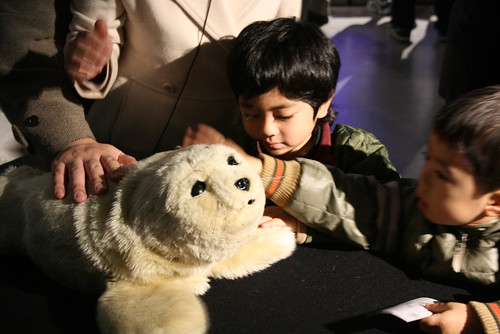9 minutes estimated reading time
This post on loneliness came about from an insight journey I took for a prospective project aimed at generation Z. Don’t get me started on defining an audience by generation, or I will go off-topic and not be back for a while while I rant about how life stages are a superior lens. But we digress. So the approach I took was looking at the problems and challenges faced by the target cohort. From reading academic papers, I came across things like anxiety, climate anxiety and loneliness. Loneliness stuck out as interesting, as it was something that small community moments could be fostered around and a brand would help in an authentic low key way without being parasitic.
What is loneliness?
First of all it makes sense to define what loneliness actually is?
loneliness, distressing experience that occurs when a person’s social relationships are perceived by that person to be less in quantity, and especially in quality, than desired. The experience of loneliness is highly subjective; an individual can be alone without feeling lonely and can feel lonely even when with other people. Psychologists generally consider loneliness to be a stable trait, meaning that individuals have different set-points for feeling loneliness, and they fluctuate around these set-points depending on the circumstances in their lives.
Encyclopedia Britannica Online
The UK government commissioned a report in 2019 by Simetrica Jacobs that quantified the economic cost of loneliness for businesses in terms of ill health and lost work productivity as £9,900 per year, per person. Commentary in The Lancet associated loneliness with a 26 percent increase in premature mortality.
Loneliness hits youth harder
In my initial research I found that we had high levels of loneliness and young adults experienced this in a more acute way.
83% of generation-z survey respondents said that they experience loneliness, compared to 68% of the UK population as a whole. I found this fascinating as if you look at the TGI data around the UK overall group cohesion score, you tend to get much smaller variances from the mean.
Nor is loneliness just a UK phenomenon. Studies have indicated that it is prevalent from multiple countries with different levels of cultural commonalities: from the US, Israel, Japan and the Philippines.
This seems to go hand-in-hand with other conditions such as anxiety and depression. There are plenty of other causes for anxiety and depression: but loneliness certainly feeds into their severity. This can be seen by the increasing incidence of mental health on US student campuses over the years according to research by The Health Minds Network.
Some experts hypothesise that the normalisation and embedding of therapy in modern culture and the popular lexicon may well be exasperating the loneliness problem, rather than helping.
The idea of being alone, but not feeling lonely has become a rich vein of content inspiration for influencers.
Loneliness is a longitudinal trend
COVID-19 isolation brought ideas of loneliness to the forefront, but it has been a rising issue for a long time.
There seems to be a correlation between mentions of loneliness and times of economic hardship. One also has to remember that during the second world war, publications were widely censored. Printing paper was in limited supply due to the war effort.
The BBC conducted conducted research with the Wellcome Foundation in 2018 with 55,000 respondents. At the time it was the largest survey that had been conducted on the subject. The research found that a higher number of younger survey respondents felt lonely and that having online-only friends correlated with higher degrees of lonely feelings.
At the time, the BBC came up with a few hypotheses about the possible high incidence of loneliness among 16 – 24 year olds:
They have less experience of regulating their emotions, so everything is felt more intensely
This might be only the first or second time they’ve felt lonely in their lives and they haven’t had the chance to learn that loneliness often passes
16-24 is an age when identity is changing. Young people are working out how they relate to others and where they stand in society. That process is naturally isolating to some extent, so feeling lonely during this time may be quite normal
BBC Anatomy of Loneliness
The view that this might be a phase was supported by qualitative responses of older respondents who said that young adulthood was the time when they had felt loneliest. Loneliness might be something that we can’t blame completely on social media.
Social capital
Public policy academic Robert D Puttnam warned about the decline in social capital across American society back in 2000 with his book Bowling Alone. Social capital is the reward from communal activity and sharing. Shrinking social capital impacts both civic and personal health according Puttnam.
Based on survey data outlining American social activities over the decades, Puttnam outlined how the population had become more disconnected from family, friends, neighbours, and social structures. This makes sense given the pivot that western society went through during the 1960s and 1970s towards existentialism, or even go further back as far as the post war period where Benjamin Spock’s The Common Sense Book of Baby and Child Care realigned parenting around the child as an individual. For various factors including long work days, both men and women working, increasing personal distractions meant that there was less participation with local organisations like:
- The PTA (parent teacher association involved with a school).
- Church (going to services, community bonding and related social work activities).
- Clubs.
- Political party related grassroots activities.
- Organised sports such as bowling leagues.
In the revised edition of Bowling Alone, Puttnam explored the omnipresent fabric of social media and the internet which represented an opportunity for new types of social connections, as well as the threat of even higher levels of alienation and isolation.
Loneliness solutions
The World Health Organisation (WHO) considers social isolation / loneliness as one of the key social determinators of health. Over this decade, they have been focusing on loneliness in aging populations. Society has already been evolving various point solutions to help combat loneliness with varying degrees of success. There have been some attempts to use healthcare’s tool de jour -behavioural economics.
Mukbang
Mukbang (or meokbang) is a type of online streaming programming that started in Korea. It crossed the cultural barrier to western audiences where it lost its meaning as it became a platform for eating feats or stunts. In its original form, it addressed the loneliness felt by many Korean single-person households.
Korean cooking is designed to be shared. You have lots of side dishes, the best known of which is kimchi.
Mukbang streamers ate and interacted with people watching their stream, giving the impression of a virtual dinner table. The watchers may be only eating an instant ramen, a convenience store meal, take-out pizza or a Cafe de Paris baguette. But they had a parasocial experience more akin to when they lived with family members.
Elder care
WHO is most focused on the impact that loneliness has on the elderly in society. Governments and the health sector have looked to address this in a systematic way. In Hong Kong, there is a disco to bring elderly together and visits from therapy dogs are two of the ways local government have looked to stave off the worst effects of isolation.
Japan pioneered the use of robotics with the PARO therapeutic robot. It looks like a baby seal and provides a similar experience to a therapy lap dog. Sony’s Aibo has been adapted for a similar role.
Inclusivity
In Ireland, the Roman Catholic church has been weakened as the organisation at the centre of social fabric due modern Ireland gradually becoming more secular.
Clips from the Late Late Show hosted by Gay Byrne from the 1962 to 1999 showing how Irish society changed. Byrne was both a chronicle of change and a catalyst for it because of the discussions his show facilitated.
This was then exasperated by a series of scandals coming to light.
The GAA (Gaelic Athletic Association) is Ireland’s largest sporting organisation and is made up of local amateur clubs playing indigenous Irish sports including camogie, hurling, Gaelic football, handball and rounders. The local GAA (Gaelic Athletics Association) clubs have gone some way to pick up the slack with the GAA Social Initative.
The GAA Social Initiative continues to grow in its capacity to enrich the lives of all older members of our communities while specifically reaching out to isolated older men across the 32 counties.
From its genesis in the observations of then President Mary McAleese of a dearth of older men at events she attended across the island of Ireland, it has grown from a small pilot project involving GAA clubs across four counties to one of the Association’s flagship community outreach projects.
GAA Online
More information
More than two thirds of adults in the UK experience loneliness | Eden Project Communities
The West’s Struggle for Mental Health | WSJ Online
Generation Z in Japan: Raised in Anxiety | Emerald Insight
The Healthy Minds Network School Mental Health Research Symposium
Loneliness at epidemic levels in America – PMC
Esther Perel Thinks All This Amateur Therapy-Speak Is Just Making Us Lonelier | Vanity Fair
Americans Are A Lonely Lot, And Young People Bear The Heaviest Burden | Rhitu Chatterjee
New York State Buys Robots for Lonely Elders | Futurism
The AI Girlfriend Seducing China’s Lonely Men
No More Loneliness: The rise of livestreaming in East Asia – YouTube
How Amazon, Apple, and Facebook Made America Lonelier Than Ever
Why loneliness fuels populism | Financial Times
Assistive social robots in elderly care: a review. Joost Broekens, Marcel Heerink, and Henk Rosendal (PDF)
Man who married a fictional character, he’d like you to hear him out | The New York Times
Man Who Married Hatsune Miku Hologram Says the Relationship Has Gone Cold | CBR




